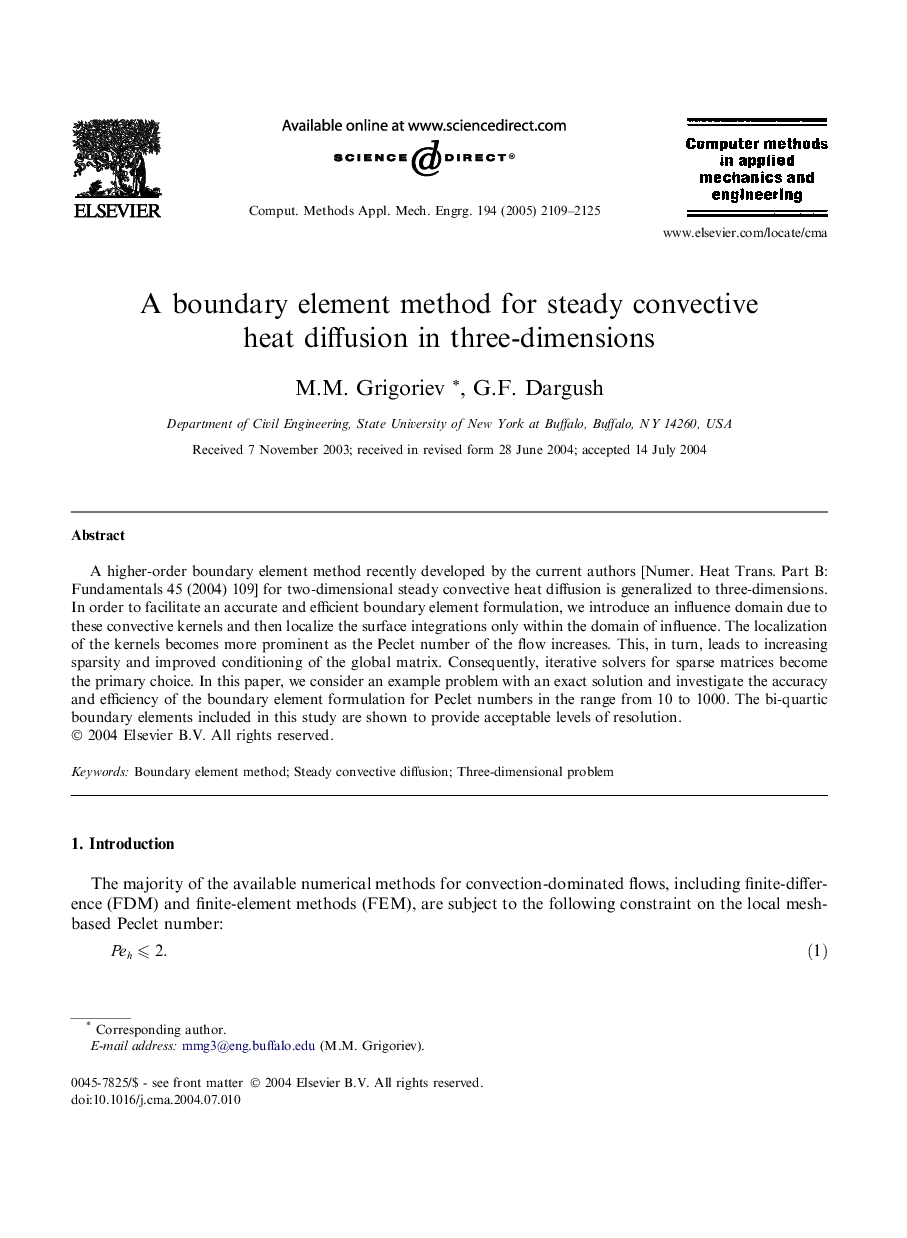| کد مقاله | کد نشریه | سال انتشار | مقاله انگلیسی | نسخه تمام متن |
|---|---|---|---|---|
| 500458 | 863089 | 2005 | 17 صفحه PDF | دانلود رایگان |

A higher-order boundary element method recently developed by the current authors [Numer. Heat Trans. Part B: Fundamentals 45 (2004) 109] for two-dimensional steady convective heat diffusion is generalized to three-dimensions. In order to facilitate an accurate and efficient boundary element formulation, we introduce an influence domain due to these convective kernels and then localize the surface integrations only within the domain of influence. The localization of the kernels becomes more prominent as the Peclet number of the flow increases. This, in turn, leads to increasing sparsity and improved conditioning of the global matrix. Consequently, iterative solvers for sparse matrices become the primary choice. In this paper, we consider an example problem with an exact solution and investigate the accuracy and efficiency of the boundary element formulation for Peclet numbers in the range from 10 to 1000. The bi-quartic boundary elements included in this study are shown to provide acceptable levels of resolution.
Journal: Computer Methods in Applied Mechanics and Engineering - Volume 194, Issues 18–20, 20 May 2005, Pages 2109–2125